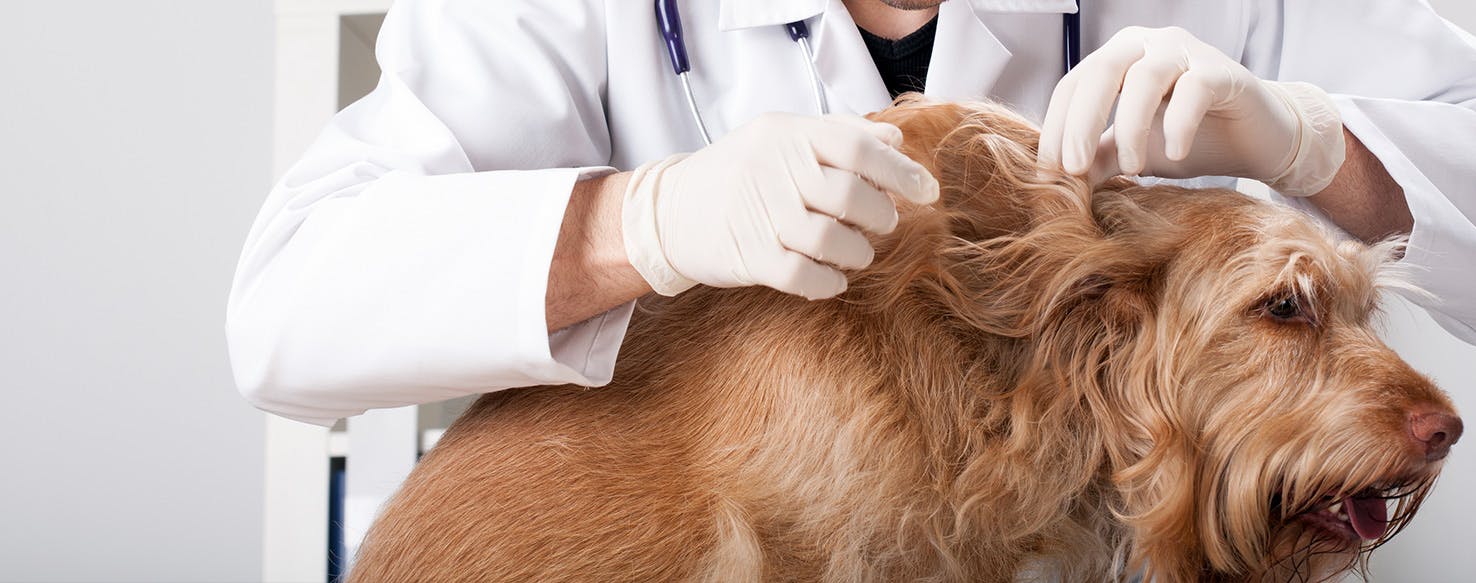If you have school-age children, you might hear about lice each school year. Thankfully, those lice cannot thrive on your dog, but your pooch is vulnerable to their own variety of skin-plaguing lice. They are just as annoying for you and for your dog, making your pooch incredibly uncomfortable and itchy. Lice can leave your dog's skin dry. And, lice can reproduce rather quickly, infesting your dog in no time.
Although lice are not typically common in household dogs, your furry four-legger could contract lice by contact with other dogs who are infested or simply by playing outside in public areas such as dog parks. If your dog is in doggie daycare or if you are often around dogs in numbers, there is always a chance your dog could bring home lice. Not as common as fleas, lice in dogs is nonetheless something that has to be dealt with immediately if your pooch contracts them.
Symptoms of Lice in Dogs
The condition of lice in dogs is most often more serious than fleas because fleas are easier to eradicate from the coat. As well, the symptoms are usually worse:
- Itching and scratching to excess
- Hair loss in areas like the neck, groin, and ears
- The coat is rough-looking
- Dry skin
- Trouble sleeping
- Anemia is often seen in puppies
Lice move more slowly than fleas and are tan or medium brown in color. Nits are often greyish-looking and stick to the hair shaft.
How did my dog get lice?
Just as it is with kids, if your dog gets lice, it is not necessarily because they are dirty. Dogs kept in less than ideal conditions are typically the ones who pick up lice. However, lice can be contracted anywhere that dogs congregate and move together in close contact:
- Doggie daycare
- Dog shows
- Walking groups
- Dog parks
- Obedience or agility classes
The best way you can prevent the parasite is to keep your dog healthy and cared for.
- Keep your canine buddy well-groomed
- Use a clean, reliable doggie daycare facility that has been recommended to you
- Keep your pup's environment clean by washing brushes and bedding
- Feed your pooch a high-quality food to ensure their immune system is in tip-top shape
- Ensure your pup is safe from all parasitic invasions by having them on a vet-prescribed prevention plan
If your dog does happen to get lice, seek veterinary help as soon as possible before the infestation gets out of hand.
Treatment of lice in dogs
Consult your vet for safe and effective treatment of the lice. The vet will prescribe a topical insecticide or a flea shampoo that works on lice, too. The treatment will be lengthy, just as it is in humans and there will be a need for repeat treatments and combing out of the nits. Be sure to advise the vet about other pets in the home in order to ensure the product is safe around all of them. Lice are species-specific and will not transfer between species. However, your dog should be quarantined to prevent the spread of the lice to other canines.
The protocol for getting rid of lice is similar to flea infestations. Your dog's bedding, toys, and collar will need to be washed in hot soapy water. If there are items that cannot be washed and you don't want to get rid of them, seal them tightly in a plastic bag, storing them safely for a few weeks. As for combs and brushes, dispose of them and get new ones just in case there are live nits on them despite your cleaning efforts. Vacuum your house (or at least the areas your dog frequents) on a daily basis.
If your pooch does contract lice, be persistent. The problem can be resolved! Consult your vet for advice on ridding your pet and home of this pesky parasite.


